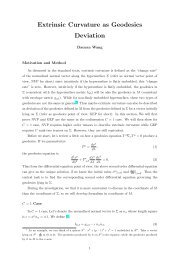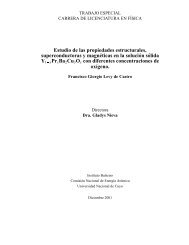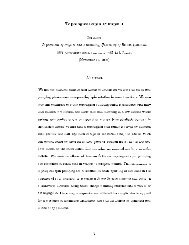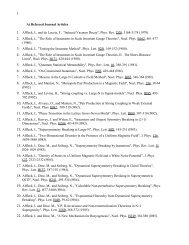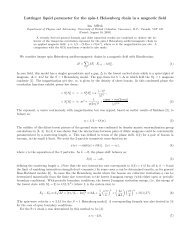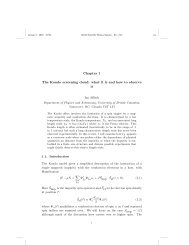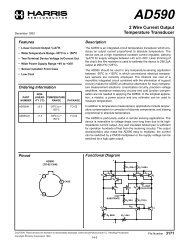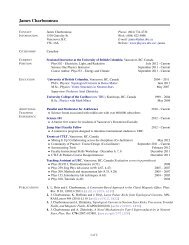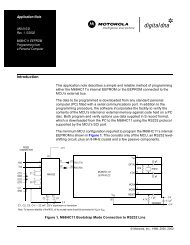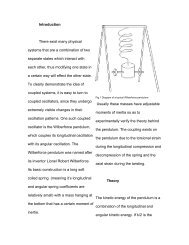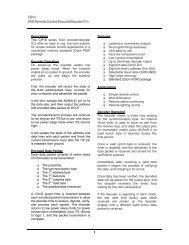Master thesis - UBC Physics & Astronomy
Master thesis - UBC Physics & Astronomy
Master thesis - UBC Physics & Astronomy
You also want an ePaper? Increase the reach of your titles
YUMPU automatically turns print PDFs into web optimized ePapers that Google loves.
M. Alexandersen : <strong>Master</strong> <strong>thesis</strong> 85<br />
theta2max = (468 arcsec) 2 ≈ 220000 arcsec 2 . However, I discovered that<br />
in some settings, the full CCD is not used, in worst case making it only<br />
1132.8 arcsec across, thereby making the minimum distance from the<br />
outer edge of the error circle to the edge of the CCD only 326.4 arcsec.<br />
However, if this were adopted, so theta2max ≈ 100000 arcsec 2 , then<br />
counts from dust closer than 125 pc would begin to be excluded before<br />
16200 s after the burst.<br />
This value should preferably be lower, so I had to accept that my data,<br />
and the synthetic background, were cut partly by a maximum radius, and<br />
partly by the edge of the CCD. I tried 300000 arcsec 2 and 250000 arcsec 2 ,<br />
which were both good compromises between cutting before the edge of the<br />
CCD, and not cutting too much. See Fig. 25. These both gave significantly<br />
better result than the run with theta2max = 600000 that I tried, and the<br />
runs without an upper limit during the development. In the end I became<br />
convinced that the 250000 arcsec 2 was the better choice. This gives that<br />
at 16200 s after the burst, this radius corresponds to 54 pc, so that all<br />
distances larger than this are represented for all times.<br />
timeintv<br />
Since the halo is most visible at early times, and some observations last<br />
much longer than any halo would be visible, the data is filtered to only<br />
include the first timeintv of the observation. So timeintv is not the maximum<br />
time after burst, but the maximum observation time to include.<br />
I had during programming found that 10 ks was not enough, as many<br />
GRBs would then not have enough counts to be useful. I also knew from<br />
my experimental reduction stage, that for GRB05724, 15 ks was good. I<br />
tried 20 ks and 15 ks here, and concluded that for the test GRBs, 15 ks<br />
were better, and the last 5. ks mostly added noise. Eventually I got the<br />
idea to use 16.2 ks, as this corresponds to three orbits of Swift, so that the<br />
observation should always include three full orbits, no matter when within<br />
an orbit the observation starts. I checked that this did not alter the results<br />
significantly from using 15 ks. This was particularly because only a few of<br />
the observations actually had exposure in the period 15000−16200 s after



